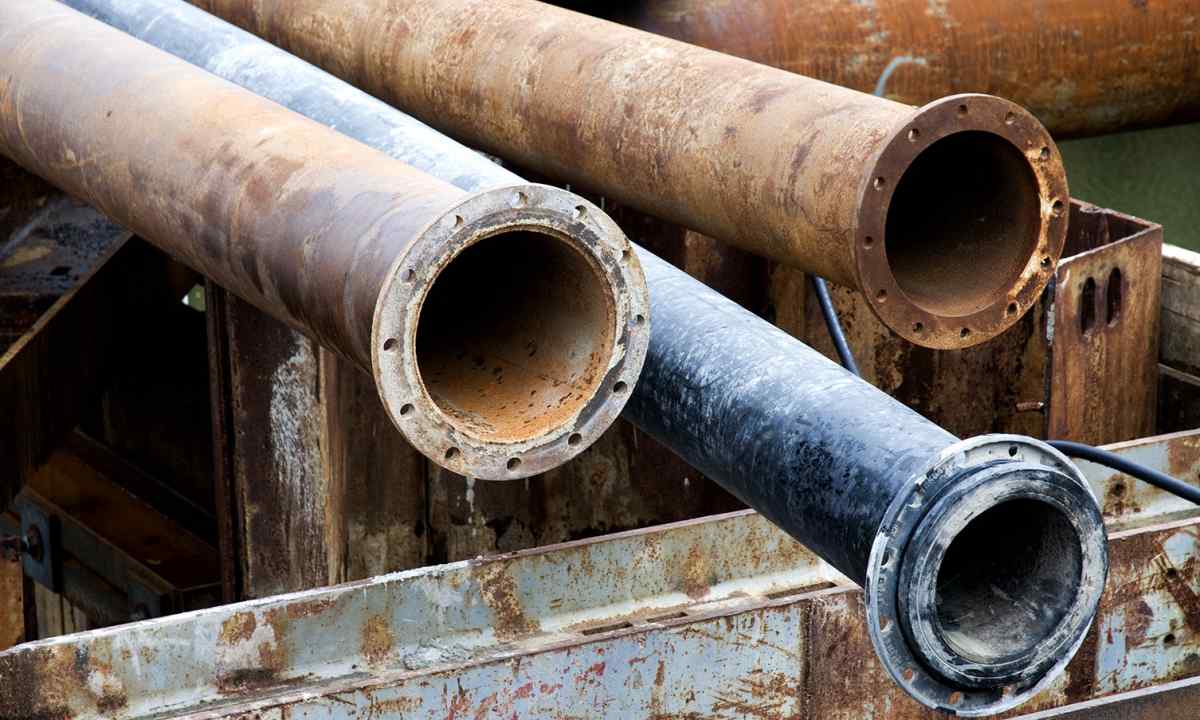Sewage pipes are classified by several signs. Allocate types of pipes proceeding from materials, diameter, form and purpose of products.
Sewage pipes to destination
The internal (household) sewerage is intended for inhabited and administration premises. It does not provide serious mechanical loadings and high temperature of drains. Such sewerage can be laid also in industrial rooms if there are no special requirements, temperature of drains does not exceed 60-70 degrees, there are no concentrated alkalis and acids.
Silent pipes become with the increased wall thickness and multilayered structure. Besides, they are distinguished by the center of the increased density thanks to mineral filler. This complex structure effectively extinguishes fluctuations, noise does not take place on all strut. As additional measures for noise reduction also minimum step of fastening and special fixture with soft gaskets between pipe and collar are used.
The external sewerage keeps within out of the room, soil. It is exposed deforming to loadings therefore such pipes do with the increased ring rigidity.
The stormwater drainage system differs in the increased diameter. Rain drains transfer large amount of garbage. The maximum ring rigidity is characteristic of them to maintain loading of traffic area of highways.
The industrial sewerage is intended for transportation of hot and chemical drains. Therefore pipes have to be made of heat-resistant materials.
The pressure head sewerage is characterized by thick walls and high resistance of airtight joints in relation to internal hydraulic pressure.
Sewage pipes in form
Smooth bell-shaped – the most widespread type of sewage pipes. By means of bell the connection with the next pipe or fasoniny is made. Sealing becomes seal ring, stamping, mastics, cement slurry or low-temperature welding. The choice of specific look depends on sewerage material.
Other version – plain bezrastrubny tubes are used for connection by couplings. Bells are postponed from bell for fasonina.
The corrugated sewage pipe connects high ring rigidity and economy of material. By means of corrugation even at the minimum thickness of wall the maximum durability to the deforming loadings is reached. Such pipes consist and 2 layers: the external corrugated cover which provides necessary rigidity and smooth inside layer thanks to which blockages are not terrible and decreases hydraulic resistance.
Classification by diameter
Pipes with a diameter of 50 mm are brought to sinks, bathrooms, shower cabins. Products in 90 mm are used for toilet bowls and bidet.
The following diameter – 110 mm. Such pipes are intended also for toilet bowls and bidet and also for struts in residential buildings, sewer plank roads, releases on well. Diameter of 160 mm is necessary for sewer plank roads, releases on well, the external sewerage, releases from network of wells on collectors. The biggest of the released diameters of pipes – 300 mm. It is used for collectors.
Classification of sewage pipes by material
Proceeding from materials from which pipes are made, define their purpose and properties.
Most often pipes are made of PVC. The popularity of this material is defined by its qualities. Such pipes serve not less than 50 years, they are resistant to influence of solution of alkalis, acids and other hostile environment. At the same time the price is rather low.
Thanks to small weight the delivery becomes simpler and easier, even in multi-storey buildings. Besides, pipes from PVC are easily mounted by bells with rubber sealants on rings.
It is possible to refer shrinkage of horizontal sites inevitable over time under the curb weight of pipes to shortcomings of material. Counter slopes which are the potential place for blockages are so formed. It is possible to avoid this trouble fastening of pipes with step at 8-10 of diameters.
Pipes from polypropylene are issued in the same sizes, as PVC. They are mounted and stykatsya in the same way. It is a little differences. The first – at the identical wall thickness of pipe from polypropylene are more rigid. The second – products from this material transfer more high temperatures (to 120 degrees). The silent sewerage is made of polypropylene.
In former times sewage pipes often did of polyethylene. Those products had number of shortcomings because of which over time they sagged and were deformed after long operation. Modern polyethylene pipes become on bell-shaped type and correspond to state standard specification. They are suitable only for the internal sewerage as are deformed already at temperature from 60 degrees.
But there is also number of advantages. First, such pipes can be defrozen: they keep elasticity even at low temperatures and after defrosting returns to the initial sizes.
Pipes from polyethylene can be mounted with bend thanks to elasticity of material. At the same time walls rather thick to make sewer strut almost noise-free.
Mostly now polyethylene is used in the sewerage for production of corrugated pipes. They can be used for the external sewerage, including for collecting pipes.
Until the end of the last century, gray cast iron was parent material for sewage pipes. Now it is used only in some cases: at open mounting of struts with strict requirements to noise level and when laying in soil on insignificant depth at the heavy deforming loads.
Gray cast iron has been driven out of the market because of the shortcomings and limited opportunities. It regularly serves only 30-40 years after which is exposed to corrosion. Bells collapse, and any insignificant blow can lead to critical damage. Cast iron weighs much that complicates transportation. At the same time its price exceeds the cost of other materials.
